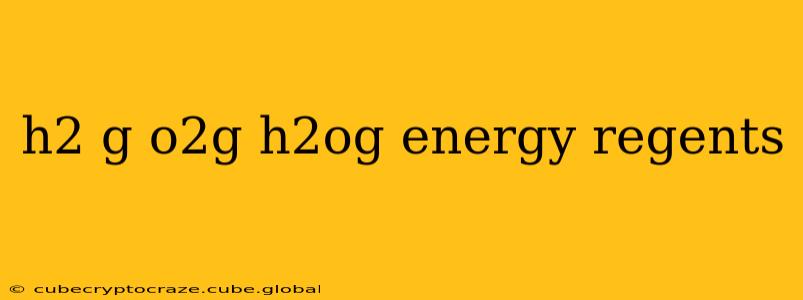H2, O2, and H2O: Understanding Energy Changes in Regents Chemistry
The Regents Chemistry exam often tests your understanding of energy changes in chemical reactions, particularly those involving hydrogen (H2), oxygen (O2), and water (H2O). This is a crucial area because these molecules are fundamental to many chemical processes and illustrate key concepts like bond energy and enthalpy changes. This guide will break down the energy relationships between these three molecules and help you tackle related Regents questions.
What are the energy changes involved in the formation of water from hydrogen and oxygen?
The reaction between hydrogen and oxygen to form water is a highly exothermic reaction, meaning it releases a significant amount of energy in the form of heat. This is because the bonds formed in the water molecule (two O-H bonds) are stronger than the bonds broken in the reactants (H-H and O=O bonds). The difference in bond energies is released as heat. The balanced equation is:
2H₂(g) + O₂(g) → 2H₂O(l) + energy
The energy released is often expressed as the enthalpy change (ΔH), which is negative for exothermic reactions. You will often find this value given in kJ/mol (kilojoules per mole).
How is bond energy related to the energy change in this reaction?
Bond energy is the amount of energy required to break one mole of a particular bond in the gaseous state. In the formation of water, the energy change is determined by the difference between the total energy required to break the bonds in the reactants (H-H and O=O) and the total energy released when forming the bonds in the product (O-H). Since more energy is released in bond formation than is required for bond breakage, the overall reaction is exothermic.
What is the role of activation energy in the reaction between hydrogen and oxygen?
Even though the reaction between hydrogen and oxygen is exothermic (releases energy overall), it still requires an initial input of energy to get started. This initial energy is called the activation energy. This energy is needed to overcome the energy barrier and initiate the breaking of existing bonds before the formation of new, stronger bonds can occur. Once the reaction starts, the energy released from bond formation exceeds the activation energy, resulting in a net release of energy.
Is the reaction between hydrogen and oxygen spontaneous?
Yes, the reaction between hydrogen and oxygen to form water is spontaneous under standard conditions. Spontaneity is determined by the Gibbs Free Energy (ΔG), which considers both enthalpy (ΔH) and entropy (ΔS) changes. In this case, the large negative enthalpy change (exothermic reaction) and a positive entropy change (increased disorder) lead to a large negative ΔG, indicating a spontaneous reaction. However, it’s important to note that even spontaneous reactions might require an initial activation energy to begin.
How can we represent the energy changes in this reaction using an energy diagram?
An energy diagram would show the reactants (H₂ and O₂) at a higher energy level than the products (H₂O). The difference in energy levels represents the enthalpy change (ΔH), which is negative for this exothermic reaction. The diagram would also show an energy barrier, representing the activation energy (Ea), that must be overcome before the reaction can proceed.
Understanding the energy changes involved in the formation of water from hydrogen and oxygen is key to mastering many concepts within Regents Chemistry. By focusing on bond energies, enthalpy changes, activation energy, and spontaneity, you will be well-prepared to answer related questions on the exam. Remember to consult your textbook and class notes for further details and examples.
